This sukiyaki recipe is made with vegetables and tofu in a savory and flavorful broth. A family friendly healthy meal done in less than 30 minutes!
If you need a delicious way to get in your dose of veggies, then hot pot is perfect choice. You can change it up for your preferences because almost anything goes!
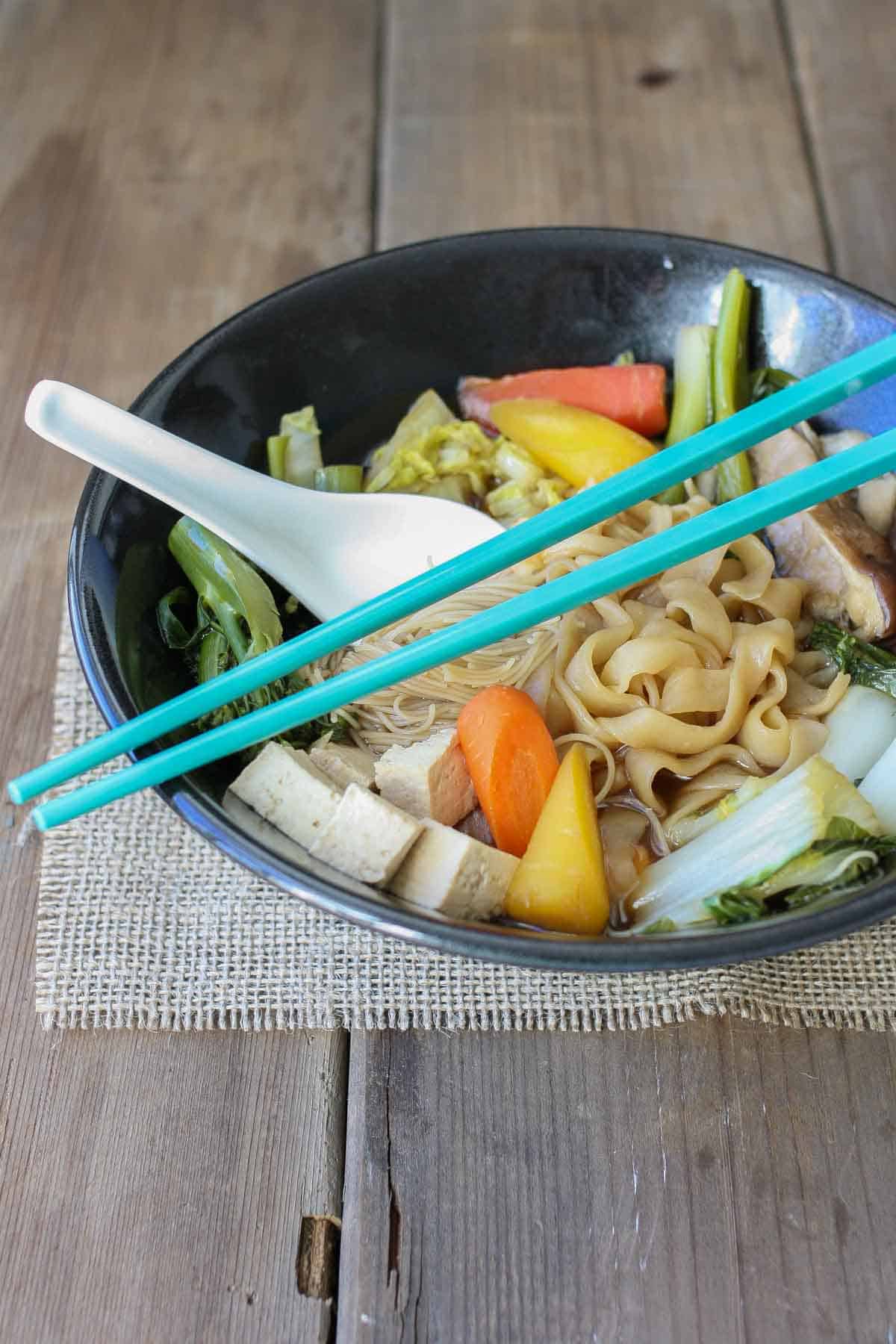
This post was originally published on January 20, 2015.
Japanese food is not in my Greek culture, but I grew up eating a lot of it. I love udon soups and miso soups but Sukiyaki is one of my top favorite warming meals!
Sukiyaki Ingredients
More often than not Japanese hot pot dishes are made with thinly sliced beef cooked either in the broth or in a cast iron pot, but since this version is a vegan take on sukiyaki I used tofu instead. See below for some variations, but here's what we usually use:
- Tamari
- Mirin rice cooking wine
- Sake
- Sugar
- Rice noodles, shirataki noodles, udon noodles, cellophane noodles, or any you prefer.
- Bok choy
- Napa cabbage
- Shiitake mushrooms, or other varieties such as enoki mushrooms
- Chinese broccoli or broccolini
- Carrots
- Green onions
- Extra firm tofu
- Water
- Oil or veggie broth for sautéing
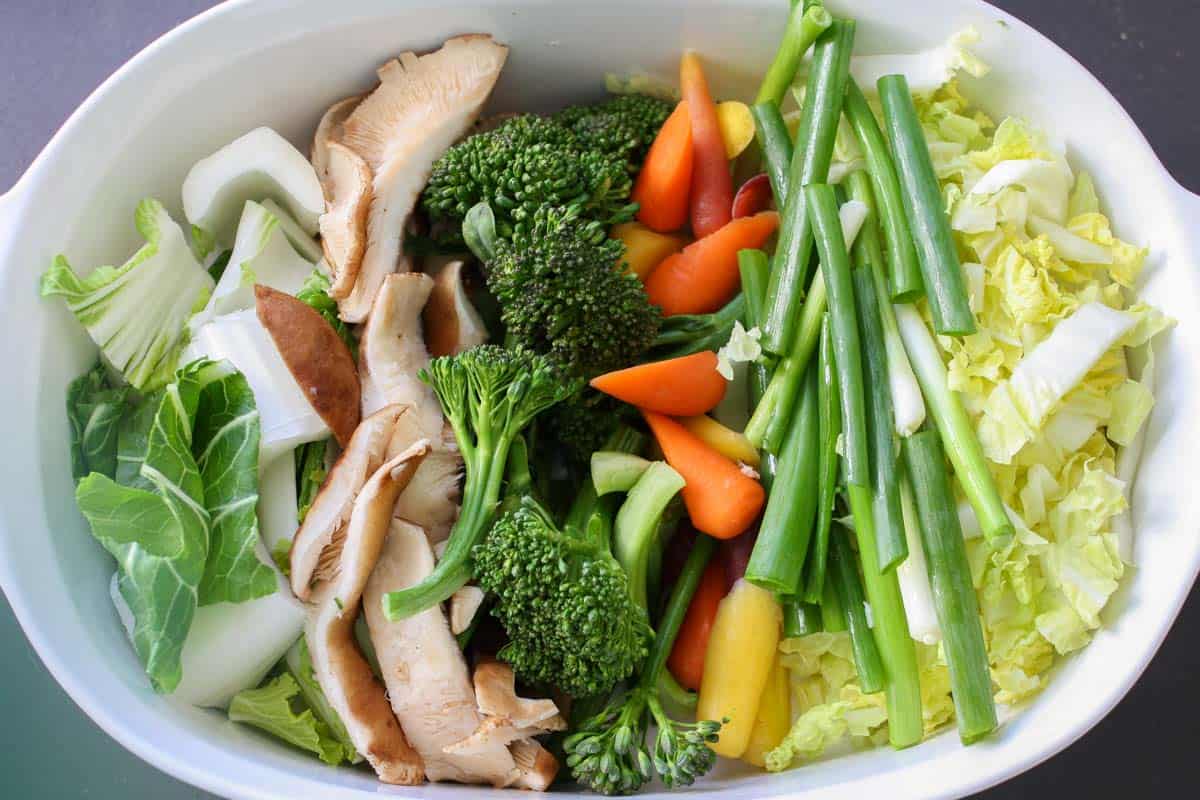
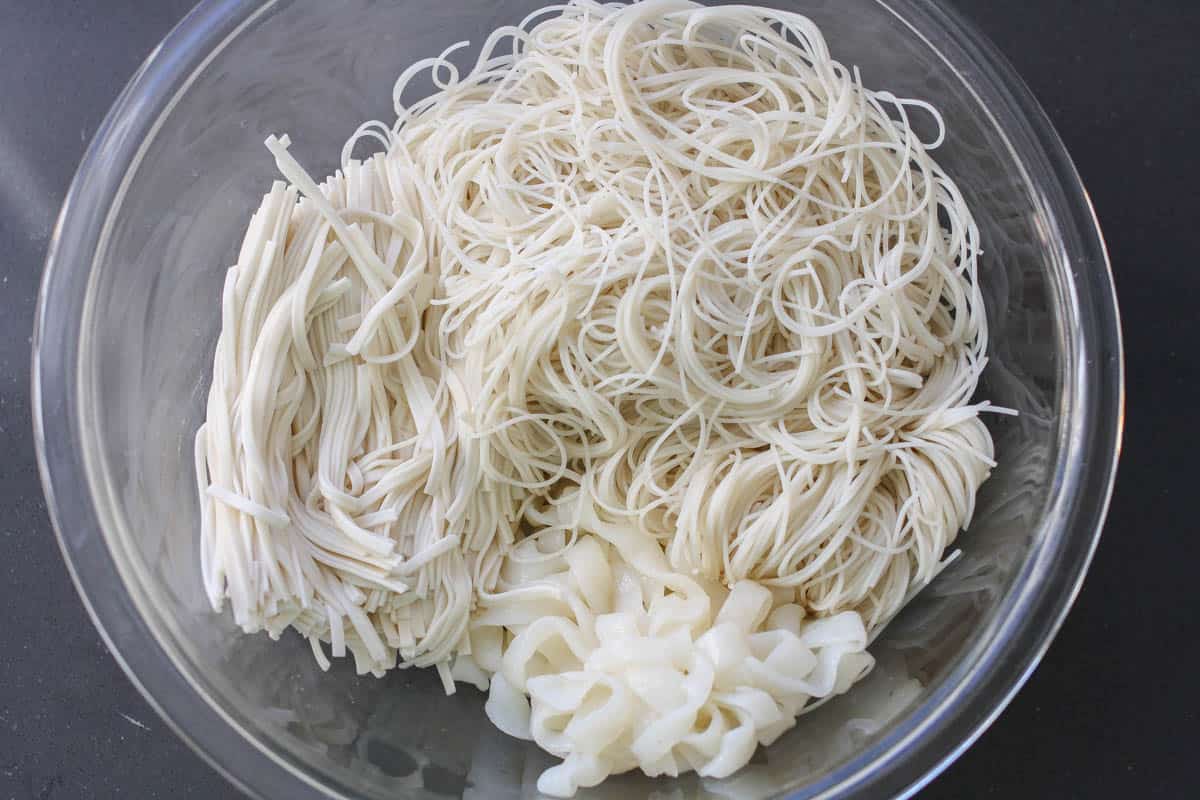
How to Make Sukiyaki
- Prepare the noodles by rinsing or soaking if necessary.
- No need to boil, they will cook in the sukiyaki broth.
- In a large soup pot, sauté the green onions and mushrooms with a dash of oil, or broth, until slightly browned.
- Remove and set aside to add later.
- Add the water, Tamari (or Soy), mirin, sake and sugar to the pot and simmer until the sugar is dissolved.
- Mix in the broccoli and carrots to the pot. Simmer for a few minutes.
- Then add the bok choy and cabbage. Simmer a few more minutes.
- Turn the heat to low and add the mushrooms, green onions, tofu and noodles.
- Allow to warm for a few more minutes until everything is just cooked.
- Turn off the heat, dish up into bowls, and serve.
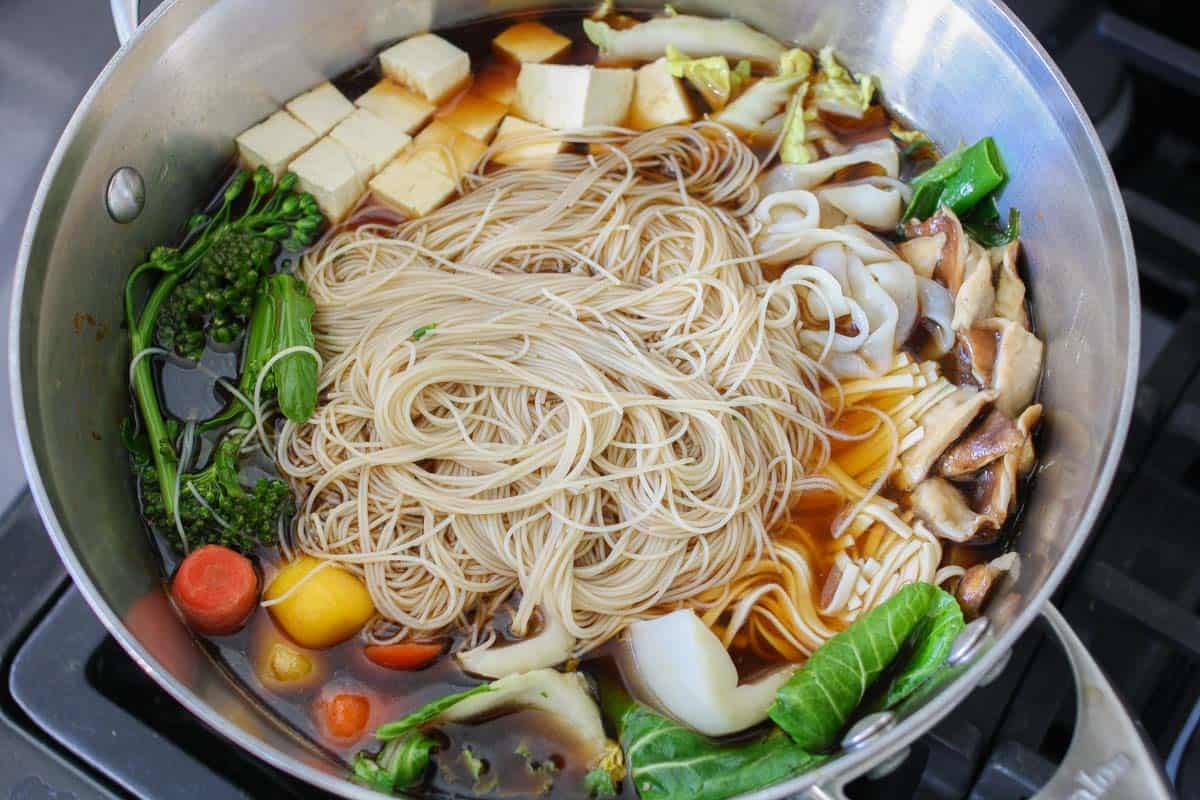
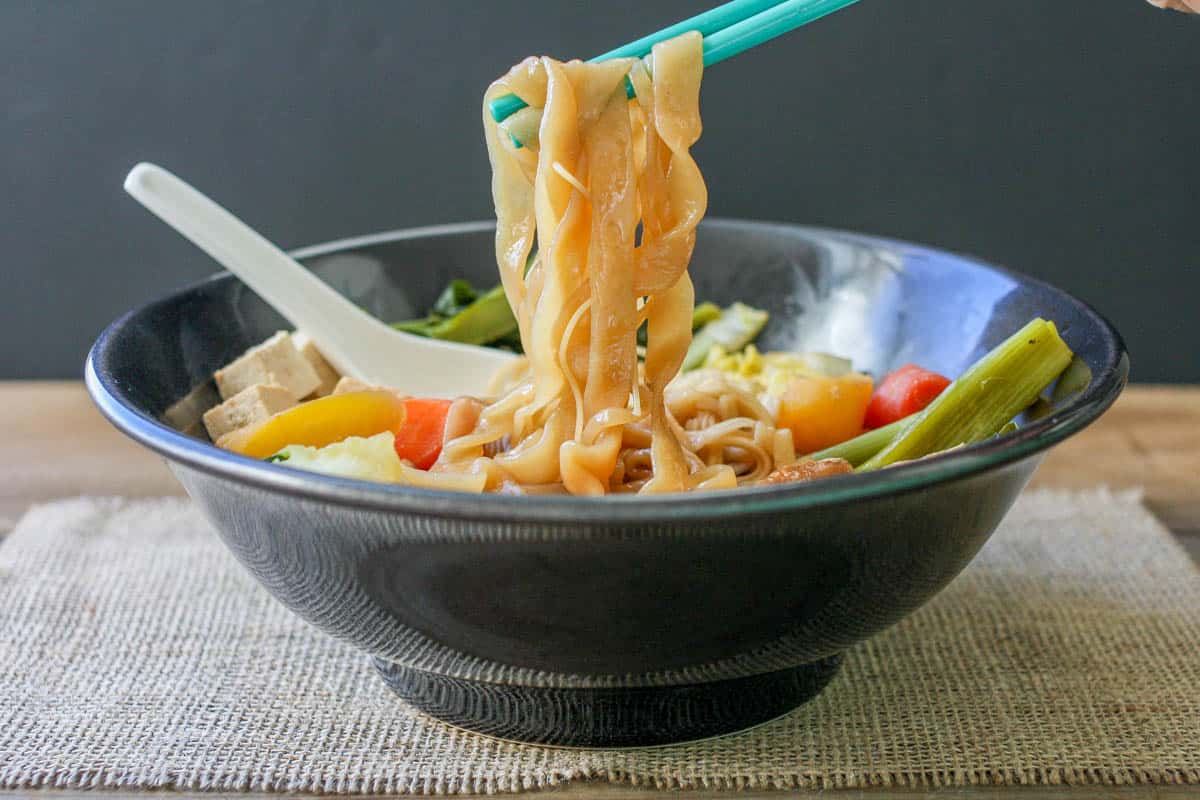
More Veggies for Hot Pot
The beauty of Japanese sukiyaki is that you can use a wide variety of vegetables. We like what I've included in the recipe, but feel free to choose from any of these hot pot veggies:
- Mushrooms - shiitake, enoki, oyster, or brown mushrooms are best.
- Onions - green onions, thinly sliced red or sweet onions.
- Bell peppers
- Spicy peppers
- Broccoli or broccolini
- Carrots
- Cauliflower
- Corn
- Cabbage - Napa cabbage (AKA Chinese cabbage), savoy cabbage, red cabbage, and even green cabbage can be used.
- Bok choy
- Kale
- Spinach
- Potatoes
- Squash
- Bean sprouts
- Snow peas
- Radish
Make sure to add in any firm veggies on the earlier side as they will take longer to cook. More delicate items like spinach should be added in just before serving.
Adding Protein
Boost your sukiyaki recipe with more flavor or protein!
I use extra firm tofu that simply cooks in the broth, but you could use grilled tofu for added texture, or any of these flavors:
Don't need this recipe to stay vegan? Feel free to add any of these ideas into your homemade hot pot creation:
- Steak
- Wagyu
- Ribeye
- Brisket
- Short rib
- Pork
- Pork loin
- Pork belly
- Lamb shoulder or leg
- Chicken
- Breast
- Thigh
- Shrimp
Slice all proteins (with the exception of the shrimp) as thin as possible to ensure they cook fully in the sukiyaki broth. Alternatively you can sear or cook them fully in a separate pan before adding to the bowl.
What to Serve With Sukiyaki
Believe it or not, the authentic way to enjoy Japanese sukiyaki is with some raw eggs on the side to dip the meat in! It's not vegan, and it's not too common here in the states, but you can still up the flavor with these:
- Sukiyaki sauce - this is made with soy sauce, mirin, brown sugar, and sake.
- Dashi
- Soy sauce
- Sriracha
- Chili sauce
- Hoisin
- Ponzu
You can also pair this hot pot dish with a side salad topped with Japanese ginger carrot dressing, or even some homemade vegan sushi rolls!
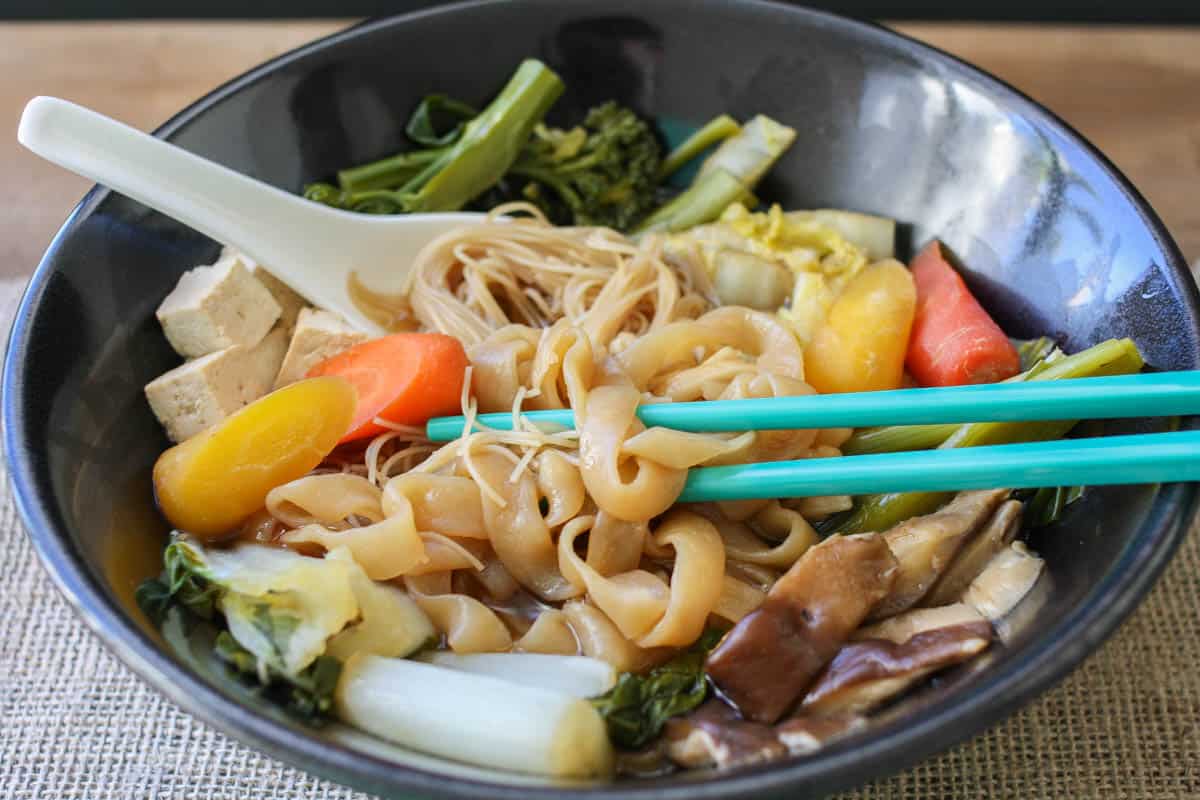
Common Questions
Most recipes use soy sauce, brown sugar, mirin, and sake. Occasionally dashi will be included as well.
The base of this broth gets its umami flavor with soy sauce (Tamari for gluten free), mirin, sake, and sugar. The added veggies also contribute to the pverall taste of the soup.
The two types of sukiyaki are kanto style and kansai style. This sukiyaki recipe follows the kanto style where the sauce is added to the pot first and then the remaining ingredients are cooked in the broth. The kansai style is cooked and eaten in stages.
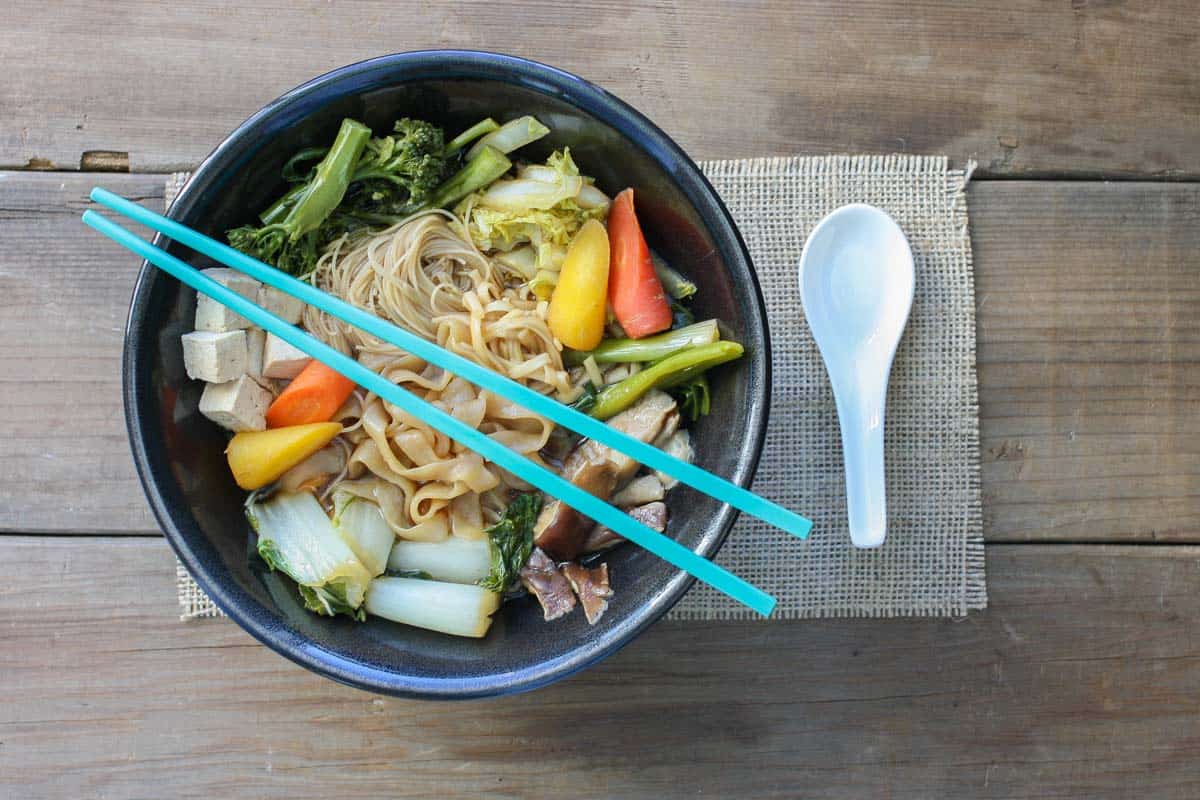
More Soup Recipes
Warm up and fill up with any of these vegan soup recipes:
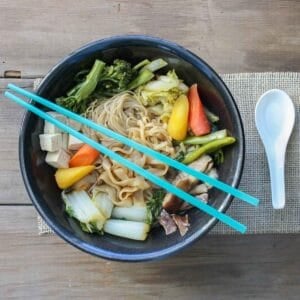
Homemade Sukiyaki Recipe (Japanese Hot Pot)
Ingredients
- 4 cups water
- ¾ cup Tamari or soy sauce if you don't need gluten free
- ¾ cup mirin rice cooking wine
- ½ cup sake
- 3 tablespoons sugar see note
- 8 ounces asian noodles rice, shirataki, udon, cellophane or other noodles of choice (I did a mix)
- 2 cups chopped bok choy
- 2 cups chopped napa cabbage
- 2 cups stemmed and sliced shitake mushrooms
- 1 cup Chinese broccoli or broccolini
- 1 cup sliced carrots
- 1 cup green onions cut into 4 inch pieces
- 1- 14 ounce package extra firm tofu cut into cubes
- oil to sautée veggies or broth if oil free
Instructions
- Rinse and soak noodles in hot water to soften, if necessary depending on the kind of noodles you chose. Shiratake simply need to be rinsed, but some cellophane and udon may need to be soaked in hot water to soften before adding. Drain when done.
- In a large soup pot, sauté the green onions and mushrooms with a dash of oil, or broth, until slightly browned. Remove and set aside to add later.
- Add water, Tamari (or Soy), mirin, sake and sugar to the pot and simmer until the sugar is dissolved. Add broccoli and carrots to the pot. Simmer for a few minutes. Then add bok choy and cabbage.
- Simmer a few more minutes. Then turn heat to low and add mushrooms, green onions, tofu and noodles. Allow to warm for a few more minutes until everything is just cooked.
- Turn off heat and serve.
Notes
- You can arrange switch up the veggies and protein for anything you prefer.
- You can use regular sugar or another sugar like coconut or maple if you prefer.
Recipe by Veggies Don’t Bite, visit our site for more great plant-based recipes.
Nutrition
Nutrition and metric information should be considered an estimate.



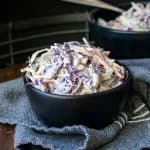














Barbara
Delicious! I cut the coconut sugar in the recipe down to 2.5 T in our ongoing effort to reduce our sugar consumption. 3T would have been fine but it tasted great with 2.5 as well. We used our Zojirushi skillet so we could keep the food warm on the table and just keep refilling our bowls as needed. Fun communal experience. Will definitely make it again. Thanks so much for sharing!
veggiesdontbite
So happy you liked it! I love the skillet idea!
Ed
Made this. It was amazing. But the broth turned out too sweet. Suggest to skip the sugar. Otherwise amazing!
veggiesdontbite
Glad you liked it Ed! I like the slight sweetness, but if you prefer it without then definitely leave out the sweetener!